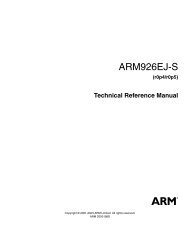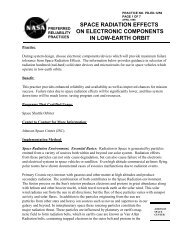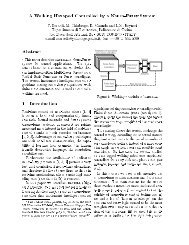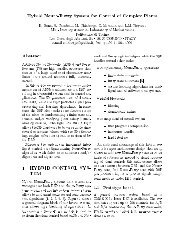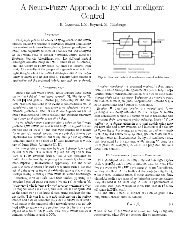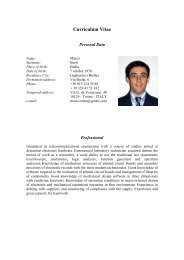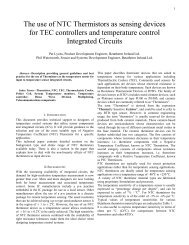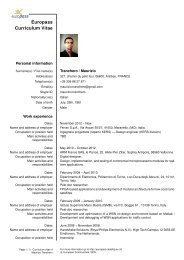Single-Chip Low Cost Low Power RF-Transceiver (Rev. B
Single-Chip Low Cost Low Power RF-Transceiver (Rev. B
Single-Chip Low Cost Low Power RF-Transceiver (Rev. B
- No tags were found...
Create successful ePaper yourself
Turn your PDF publications into a flip-book with our unique Google optimized e-Paper software.
CC2500The GDO0 pin can also be used for an on-chipanalog temperature sensor. By measuring thevoltage on the GDO0 pin with an external ADC,the temperature can be calculated.Specifications for the temperature sensor arefound in Section 4.7 on page 15.With default PTEST register setting (0x7F) thetemperature sensor output is only availablewhen the frequency synthesizer is enabled(e.g. the MANCAL, FSTXON, RX and TXstates). It is necessary to write 0xBF to thePTEST register to use the analog temperaturesensor in the IDLE state. Before leaving theIDLE state, the PTEST register should berestored to its default value (0x7F).State changes are commanded as follows:When CSn is high the SI and SCLK is set tothe desired state according to Table 18. WhenCSn goes low the state of SI and SCLK islatched and a command strobe is generatedinternally according to the control coding. It isonly possible to change state with thisfunctionality. That means that for instance RXwill not be restarted if SI and SCLK are set toRX and CSn toggles. When CSn is low the SIand SCLK has normal SPI functionality.All pin control command strobes are executedimmediately, except the SPWD strobe, which isdelayed until CSn goes high.11.3 Optional Radio Control FeatureThe CC2500 has an optional way of controllingthe radio, by reusing SI, SCLK and CSn fromthe SPI interface. This feature allows for asimple three-pin control of the major states ofthe radio: SLEEP, IDLE, RX and TX.This optional functionality is enabled with theMCSM0.PIN_CTRL_EN configuration bit.CSn SCLK SI Function1 X X <strong>Chip</strong> unaffected by SCLK/SI↓ 0 0 Generates SPWD strobe↓ 0 1 Generates STX strobe↓ 1 0 Generates SIDLE strobe↓ 1 1 Generates SRX strobe0SPImodeSPImodeSPI mode (wakes up intoIDLE if in SLEEP/XOFF)Table 18: Optional Pin Control Coding12 Data Rate ProgrammingThe data rate used when transmitting, or thedata rate expected in receive is programmedby the MDMCFG3.DRATE_M and theMDMCFG4.DRATE_E configuration registers.The data rate is given by the formula below.As the formula shows, the programmed datarate depends on the crystal frequency.R( 256 + DRATE _ M )DATA=282⋅ 2DRATE _ E⋅ fXOSCThe following approach can be used to findsuitable values for a given data rate:⎢ ⎛ RDRATE _ E = ⎢log2⎜⎢⎣⎝ fDRATE _ M =fRDATA⋅ 2⋅ 2XOSC2028DATADRATE _ EXOSC⋅ 2⎞⎥⎟⎥⎠⎥⎦− 256If DRATE_M is rounded to the nearest integerand becomes 256, increment DRATE_E anduse DRATE_M=0.The data rate can be set from 1.2 kBaud to500 kBaud with the minimum step size of:Min DataRate[kBaud]TypicalData Rate[kBaud]Max DataRate[kBaud]Data RateStep Size[kBaud]0.8 1.2/2.4 3.17 0.00623.17 4.8 6.35 0.01246.35 9.6 12.7 0.024812.7 19.6 25.4 0.049625.4 38.4 50.8 0.099250.8 76.8 101.6 0.1984101.6 153.6 203.1 0.3967203.1 250 406.3 0.7935406.3 500 500 1.5869Table 19: Data Rate Step SizeSWRS040B Page 27 of 92




